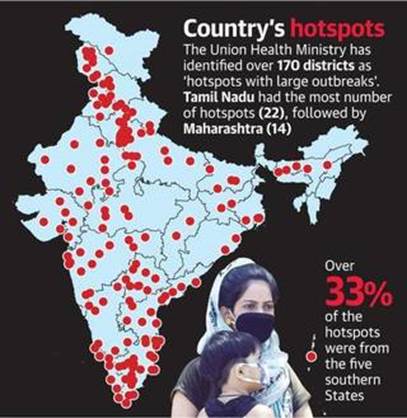Why in news?
- Nearly one in five districts in India is a hotspot, the Health Ministry said on 15th April 2020, a day that saw at least 1,036 COVID-19 infections.
- The government said it had classified every district into a hotspot, potential hotspot or a green zone.
- Of India’s 736 districts, 170 were ‘hotspots’, defined as places with at least 15 confirmed infections or where there was an exponential rise in cases.

Details
- District Magistrates had the authority to declare regions as hotspots, and a protocol would be in place to check how a district was performing in containing the spread of the virus.
- In order to break the chain of transmission, focus needs to be on contact tracing, monitoring and clinical management.
- States have been asked to uniformly implement the containment plan in every district across the country.
What is a Hotspot in the context of diseases?
- Hotspots have been variously described as areas of elevated incidence or prevalence, higher transmission efficiency or risk, or higher probability of disease emergence
- The importance of spatial clusters, or “hotspots,” in infectious disease epidemiology has been increasingly recognized, and targeting hotspots is often seen as an important component of disease-control strategies.
- However, the precise meaning of “hotspot” varies widely in current research and policy documents.




